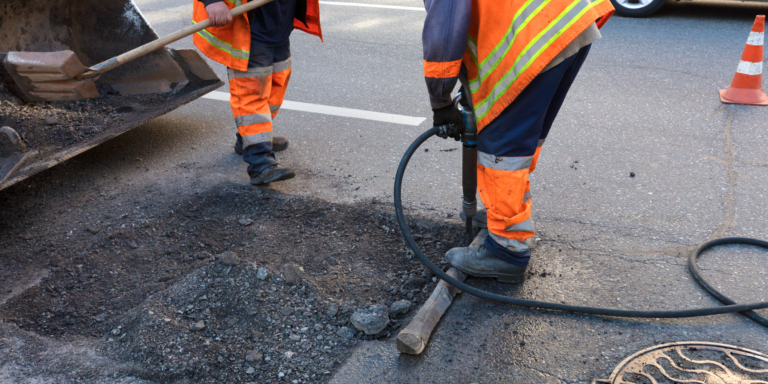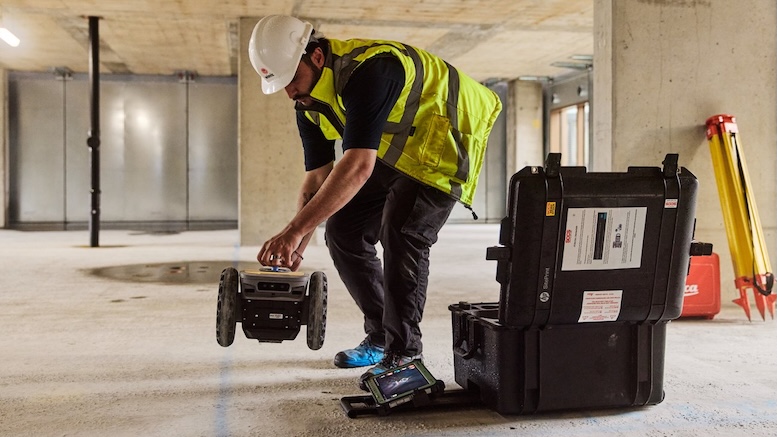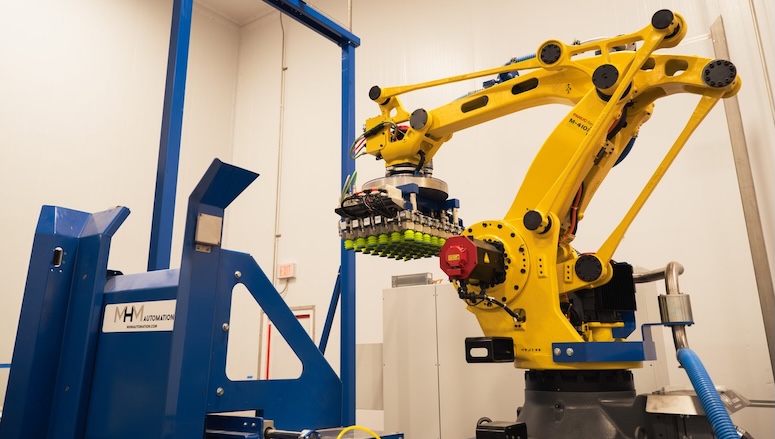— 9 min read
Road Maintenance Essentials: Ensuring Safety and Longevity


Last Updated Feb 7, 2025

Stephen Abadie
Infrastructure Team Lead
Stephen Abadie is an Infrastructure Team Leader at RNGD. Stephen joined RNGD in 2015 as the Infrastructure Division’s Assistant Project Manager. Now, as Team Leader, Stephen uses his 17+ years of professional expertise in major infrastructure and civil construction to lead a team of 85+ employees in talent development, lean project delivery, and execution of production systems, delivering quality products for RNGD's diverse client base.
In his day-to-day, he directs his team on safety, quality, and production for all current and future projects. He enjoys leading a diverse group of personalities that span generations, learning from those with decades of experience, and mentoring the next generation of construction talent. A native of New Orleans, Stephen graduated from Louisiana State University with a degree in Construction Management.
Both construction and building relationships are his true passions, but when he’s not in the office or on-site, Stephen’s with family or spending time outdoors hunting or golfing. When he finds the time, he indulges in a good book or article about world history.

James Hamilton
Writer & Producer
85 articles
James Hamilton is a writer based in Brooklyn, New York with experience in television, documentaries, journalism, comedy, and podcasts. His work has been featured on VICE TV and on The Moth. James was a writer and narrator for the show, VICE News Tonight, where he won an Emmy Award and was nominated for a Peabody Award.
Last Updated Feb 7, 2025

From federal interstates to the streets of a small town, roads are massive and high-stakes infrastructure investments. Governments, municipalities, and communities need roads to safely connect people, economic centers, and essential services.
They also need roads to last. Damaged, disrepair, or obstructed roads can be life-threatening and create serious economic consequences. Road maintenance keeps roads and their supporting components safe, functional and accessible to communities for as long as possible. Road maintenance is a combination of reactive and proactive work that can be crucial for a community’s quality of life, economic development and ability to respond to disasters and emergencies.
This article explores road maintenance, including the three main types, common road components and best practices.
Table of contents
The Basics of Road Maintenance
When most people think of road maintenance, they usually imagine the often labor-intensive and potentially inconvenient work to repair the surface of a road: patching potholes, repairing cracks, repainting lane markers, or clearing debris.
However, road maintenance also includes monitoring and fixing all the elements that make up, support or run along streets, roads and highways. This might include:
- Road layers (including the subgrade, subbase, base and surfaces such as concrete or asphalt)
- Drainage systems (like storm drains, catch basins and culverts)
- Bridges and tunnels
- Landscaping
- Signage and signals
- Lighting
- Guardrails
- Utilities (including pipes, wires and cables for water, sewage, electrical, telecommunications and internet)
- Sidewalks (including curbs and bike lanes)
- Other highway elements such as on and off ramps and overpasses
Issues with these elements can emerge from any number of issues, including wear and tear, weather, accidents or poor workmanship. Many areas’ roads were designed and constructed decades ago and have either fallen into disrepair or are unable to meet the needs of the area’s growing population.
A road’s owner or manager is responsible for regularly inspecting the road for issues, scheduling work and responding to emergencies. Many municipalities will contract with an engineering firm to manage the preventative logging of issues and a general contractor (GC) to manage the repair and maintenance work. Most roads are originally commissioned and managed by a city or a county, while the federal government manages the interstate system.
However, many roads pass through numerous jurisdictions. In some cases, a special commission will manage a section of a road, such as a bridge.
The Three Types of Road Maintenance
Road maintenance is usually either preventative or reactive in nature. Preventative maintenance is planned, proactive tasks intended to address issues before they become larger problems, extend the life of the road or avoid issues altogether. Reactive maintenance addresses problems and issues that have already occurred and need immediate attention.
Work can usually be divided into three categories.
| Type of road maintenance | Definition | Examples |
| Routine | Regularly scheduled work to maintain the integrity and function of roads and its components and to prevent major issues in the future. These tasks are done frequently, often somewhere between daily to yearly, depending on the task. | - Pothole patching - Crack sealing - Striping and pavement marking - Sign repairs and replacement - Guardrail repairs - Cleaning drainage systems - Landscape maintenance - Road debris removal or sweeping - Street light bulb replacement - Traffic light and signals repair |
| Periodic | Work to repair or replace components of roads that have an extended lifecycle. These tasks can be both proactive and reactive and occur less regularly, usually somewhere between every few years to every ten years depending on the component. | - Subgrade or subbase replacement - Asphalt resurfacing and overlay - Utilities installation or repair - Concrete slab repairs or replacement - Bridge repairs - Culvert replacement - Major sign and signal upgrades - Landscaping overhauls |
| Emergency | Work to respond to major and urgent issues and hazards. These tasks usually require crews to be dispatched as soon as possible to secure the area, make temporary repairs to return to the road to at least partial operation and then find a more permanent solution. | - Repair waterline break or rupture - Fix washouts or sinkholes - Repair damage from vehicle accident, such as fire damage or broken barriers - Debris removal after storms or accidents - Fix surface breakdowns or failures - Replace or repair damaged or malfunctioning utility lines |
The Process of Road Maintenance Construction
Effective and sustainable road maintenance usually requires a multi-faceted process that should include:
1. Frequent Inspections
Routine, regularly scheduled or ongoing evaluation of roads to detect emerging problems and potential future issues. These inspections might include visual, in-person analysis, monitoring of utilities and reports from the owner or residents. Some places use road scanners and pipeline cameras to help with ongoing assessment. Many municipalities will contract with an engineering firm to manage inspections. Utilities are consistently being monitored by providers and the municipality.
2. Conditions Analysis
The remaining service life of a road and its components, as well as the likelihood of future problems, can often be anticipated using a combination of information gathered at inspections, data gathered with advanced technology, the age of the road and an area’s anticipated economic and population growth.
Traffic study counts and traffic loop detectors can be used to assess a road’s usage. Many municipalities and the Department of Transportation (DOT) collect and store information about road conditions, incidents such as accidents or weather and the history of repairs.
3. Work Planning
Short- and long-term plans and budgets are developed to maximize the impact of work and minimize traffic disruptions. Data and analysis on the road can be used to help prioritize the urgency of tasks. Planning should determine what and when work needs to be done. The choice is often between doing isolated maintenance to keep the road in use and doing major repairs and reconstruction. There are a few considerations when planning:
- The Master Plan: A master plan projects an area’s future growth. Areas might need to be prioritized if they are likely to see increased usage because of commercial or residential development. Industrial areas might need more durable materials to handle heavy equipment and trucks.
- Funding: Major issues or emergencies usually require immediate action, but routine and periodic maintenance usually requires difficult prioritization and money gathering through applying for federal and state funding, issuing bonds or appealing to local lawmakers. For example, an area that needs $25 million of road maintenance might find it difficult to get that much money all at once and decide to do $5 million of work each year.
- Strategic alignment of maintenance and initiatives: Roads have many components that might need maintenance. When one part needs work or replacing, many municipalities will opt to do maintenance on other components as well. For example, the replacement of a utility, such as water or gas, might require opening up a road, so the municipality might decide to repair or update other parts of the road to help it better last into the future. Similarly, some local governments will launch initiatives, such as increasing the number of bike lanes or improving accessible walkways. This can also be a time to plan other work, such as repaving, restriping or improving landscaping.
4. Execution
Many municipalities have a road maintenance department, while others contract with a GC. Work should include an immense amount of communication with the authority having jurisdiction (AHJ) and all residents that might be impacted. Some projects will create an informational website, hold informational meetings, or distribute flyers.
Execution requires diligent project management and effective coordination of worksite logistics, as roads are often moving work sites, involve numerous contractors and impact the lives of people working and living nearby. Traffic coordination and management is crucial for the completion of the project and the safety of workers. Most places try to maintain traffic flow as much as possible, so crews rely on techniques such as performing night at work, detours and traffic pacing.
5. Emergency Work
Emergency work often exists outside of normal processes, as it usually requires immediate action and can involve numerous stakeholders working at the same time in the same area. Emergency work is also more likely to require major traffic disruptions.
Stakeholders who are responsible for managing roads should have emergency preparedness plans that detail ideal communication, mobilization and work plans, which can accelerate response times and ultimately save money.
Best Practices for Road Maintenance
Road maintenance varies based on many considerations, such as location, funding and weather. There are a few things that usually make work more effective and efficient:
Be data-driven.
Road maintenance requires prioritization based on ever-changing road conditions, funding and community input. Using data and modeling can help make choices that lead to the most desirable outcomes for the most number of people.
Many places use technology to assess conditions, such as road scanners, loop detectors or cameras. This also includes regularly referencing the area’s master plan to understand the age of infrastructure and projected future needs.
Be transparent.
Road maintenance leads to amazing outcomes, but it can be extremely disruptive to residents when it’s happening. GCs should work to be transparent with the AHJ about expected timelines, delays and issues so that the AHJ can plan accordingly.
Transparency is also crucial with residents affected by maintenance work. Communicating what to expect and potential delays through websites, flyers, traffic notices or meetings and creating space for people to ask questions can help communities feel more in control and invested in the process.
Collaborate.
Roads have a high number of stakeholders, including the DOT, utility companies, emergency responses, residents, and government representatives at the local, state, and federal levels. Whenever possible, GCs and maintenance departments should foster collaboration between stakeholders, which will help coordinate construction that can be done at the same time and avoid miscommunication. Many GCs will host OAC (owner, architect, contractor) meetings regularly during construction.
This can help avoid delays, troubleshoot problems and approve changes as they are proposed. This can be particularly helpful for road maintenance projects that require many different crews and contractors to be working at the same time.
Fixing Today’s Problems With An Eye Toward the Future
Road maintenance goes beyond just keeping roads safe and functioning by responding to immediate problems. It’s also about building better futures for the communities that rely on roads for work, getting to school and accessing crucial services.
Every pothole, crack or leak requires a two-part decision: fixing the problem and setting the road up for the longest, most effective lifespan as possible. Road work and road maintenance is part of preparing areas for future economic development and population growth, and it requires extensive planning, funding and maintaining effective workflows.
Was this article helpful?
Thank you for your submission.
71%
29%
You voted that this article was . Was this a mistake? If so, change your vote
Scroll less, learn more about construction.
Subscribe to The Blueprint, Procore’s construction newsletter, to get content from industry experts delivered straight to your inbox.
By clicking this button, you agree to our Privacy Notice and Terms of Service.
Thank you!
You’re signed up to receive The Blueprint newsletter from Procore. You can unsubscribe at any time.
Categories:
Written by

Stephen Abadie
Infrastructure Team Lead
Stephen Abadie is an Infrastructure Team Leader at RNGD. Stephen joined RNGD in 2015 as the Infrastructure Division’s Assistant Project Manager. Now, as Team Leader, Stephen uses his 17+ years of professional expertise in major infrastructure and civil construction to lead a team of 85+ employees in talent development, lean project delivery, and execution of production systems, delivering quality products for RNGD's diverse client base.
In his day-to-day, he directs his team on safety, quality, and production for all current and future projects. He enjoys leading a diverse group of personalities that span generations, learning from those with decades of experience, and mentoring the next generation of construction talent. A native of New Orleans, Stephen graduated from Louisiana State University with a degree in Construction Management.
Both construction and building relationships are his true passions, but when he’s not in the office or on-site, Stephen’s with family or spending time outdoors hunting or golfing. When he finds the time, he indulges in a good book or article about world history.
View profile
James Hamilton
Writer & Producer
85 articles
James Hamilton is a writer based in Brooklyn, New York with experience in television, documentaries, journalism, comedy, and podcasts. His work has been featured on VICE TV and on The Moth. James was a writer and narrator for the show, VICE News Tonight, where he won an Emmy Award and was nominated for a Peabody Award.
View profileExplore more helpful resources

Harnessing Smart Construction Technology for Future Growth
Augmenting human intelligence with smart technology in construction makes it possible to tackle the considerable challenges of building the structures society demands. To adapt to client expectations while maintaining profitability,...

Mastering Capital Project Risk Management Across the Project Lifecycle
Capital projects — construction of significant infrastructure such as highways, utilities, or large-scale structures like hospitals or office buildings — have long timelines and with longer construction time comes greater...

Automation in Construction: Transforming the Future of Building
Technological advancements empower the construction industry to tackle complex projects and drive the global demand for sustainable, feature-rich structures technology makes possible. From design to closeout, construction automation is enabling...

Bid Management Software: Key Features & How to Choose the Right Fit
Bidding on construction projects can be a complex process. Sourcing appropriate bids and requests for proposals, analyzing bid documents, making sure estimates, preliminary schedules, and other mandatory requirements are met...
Free Tools
Calculators
Use our calculators to estimate the cost of construction materials for your next project.
Templates
Find a template to help you with your construction project tasks.
Material Price Tracker
Get the latest U.S. retail prices and view historical trends for common building materials.
Glossary
Explore key terms and phrases used in the industry.
